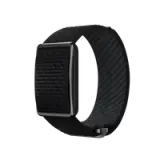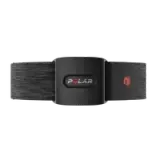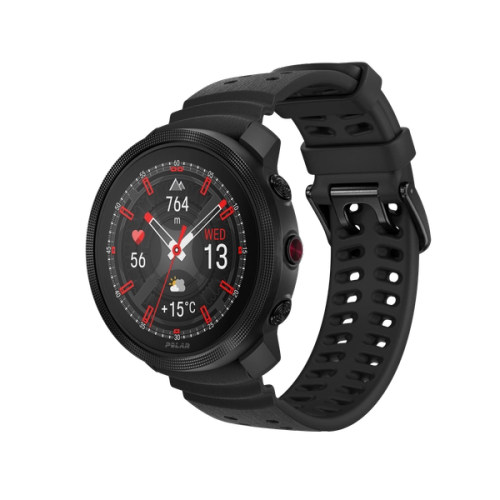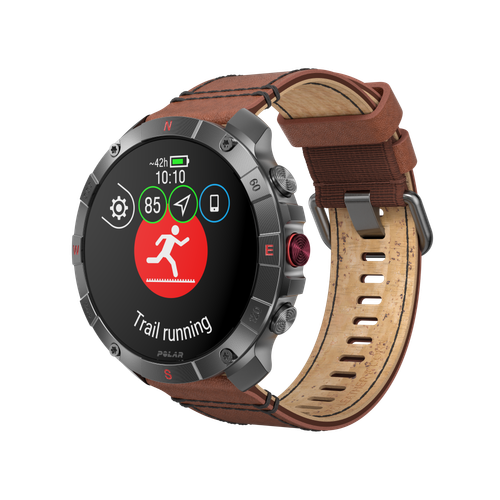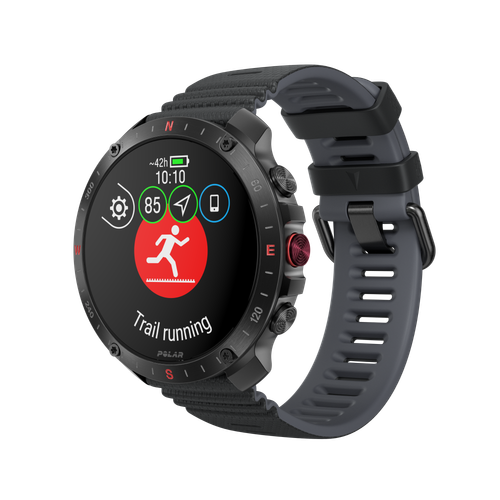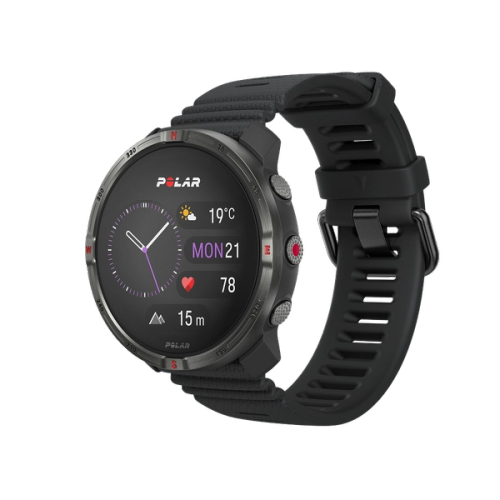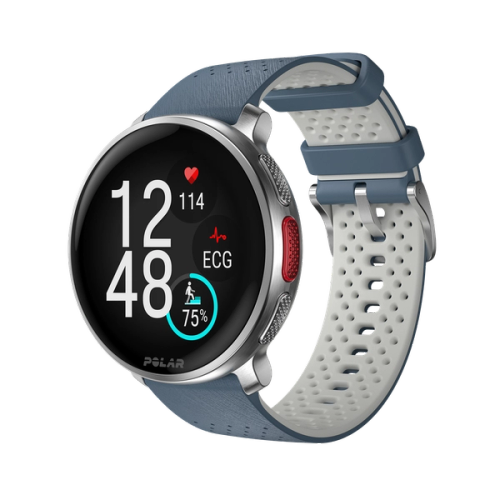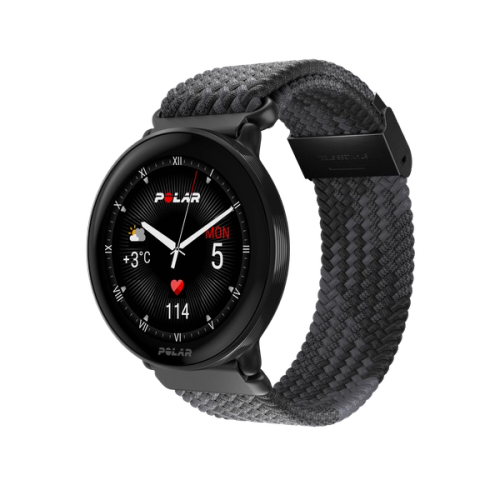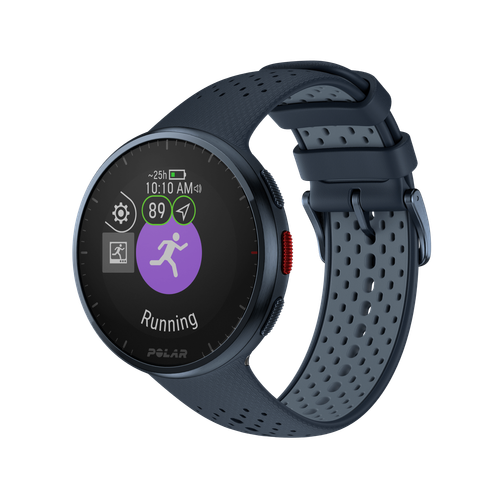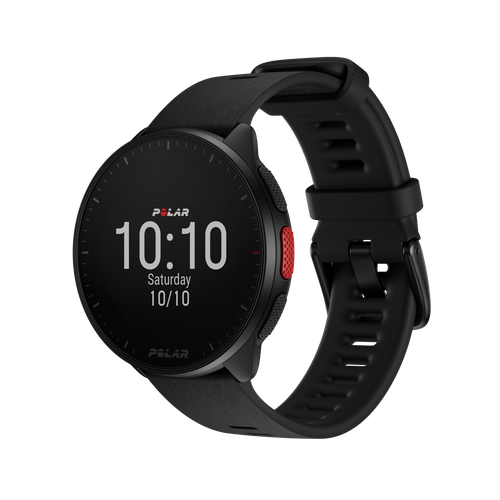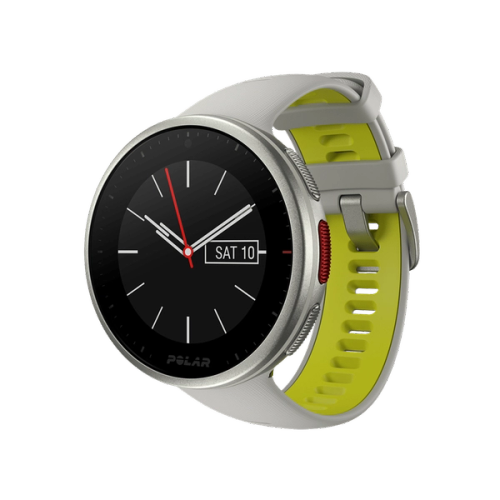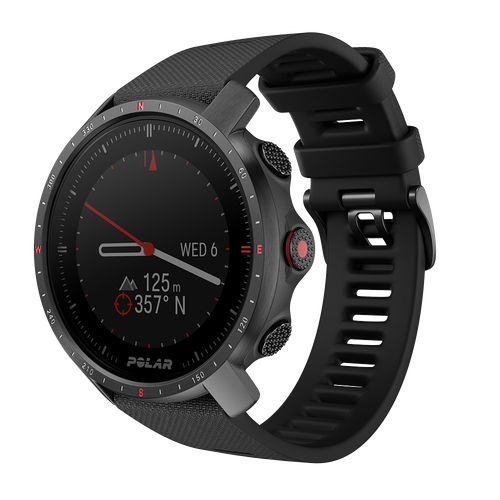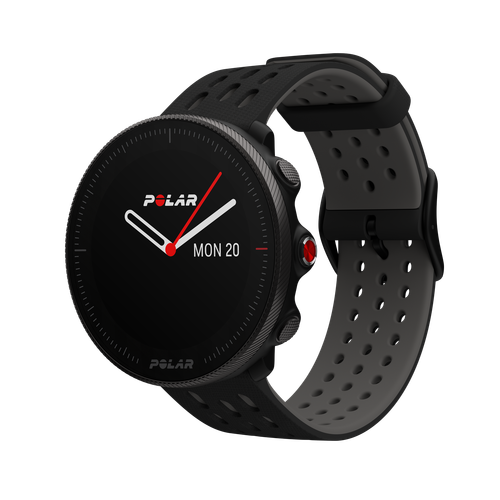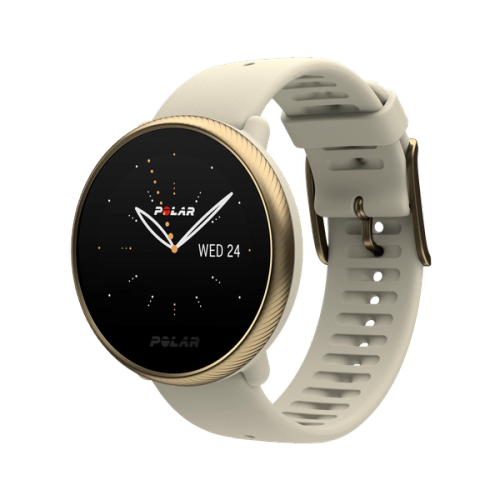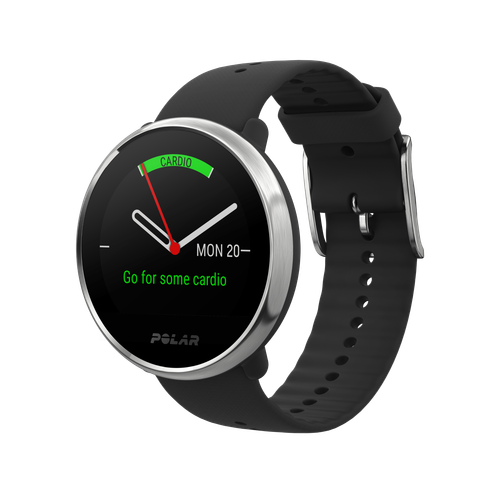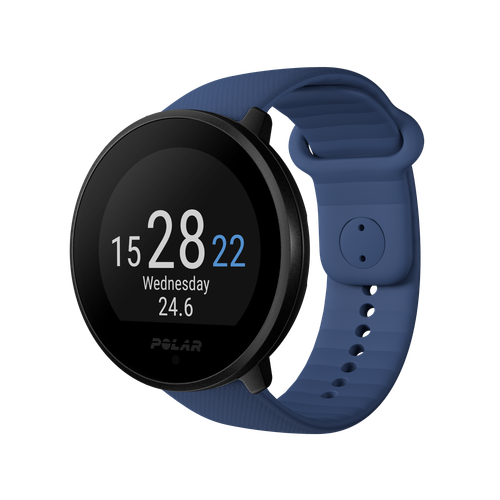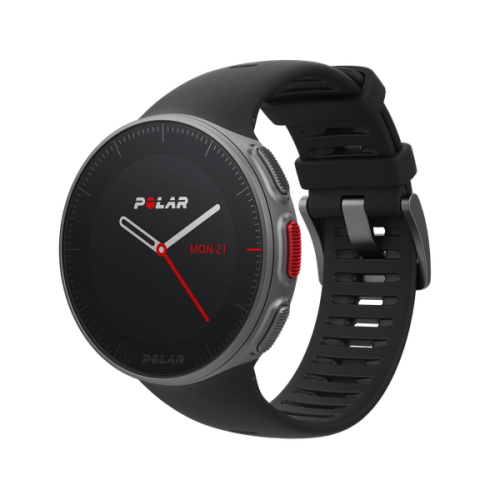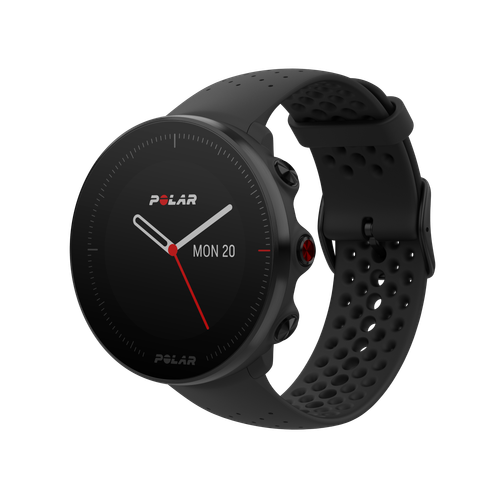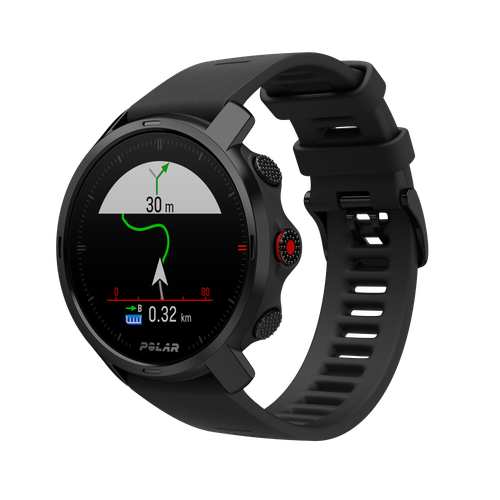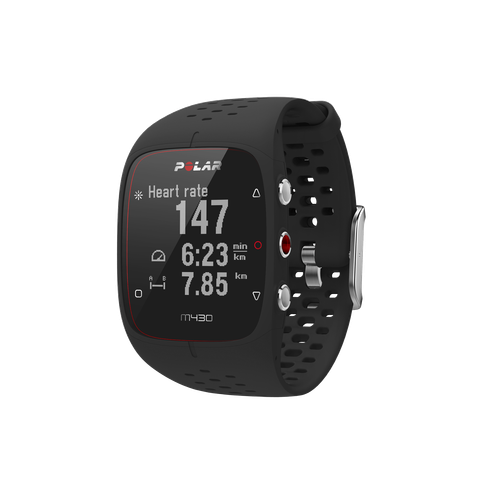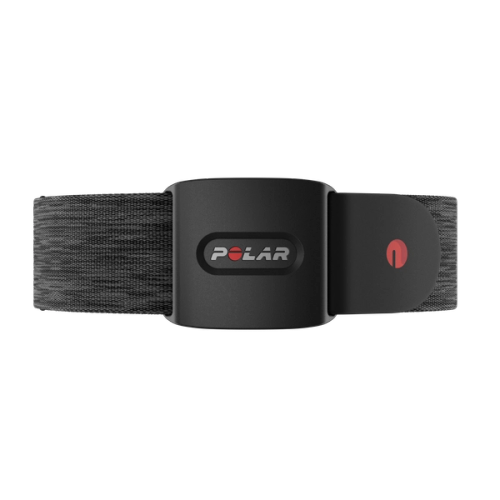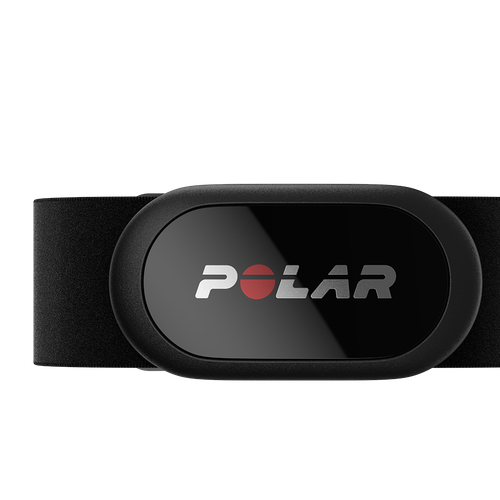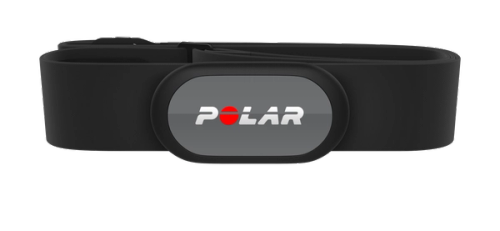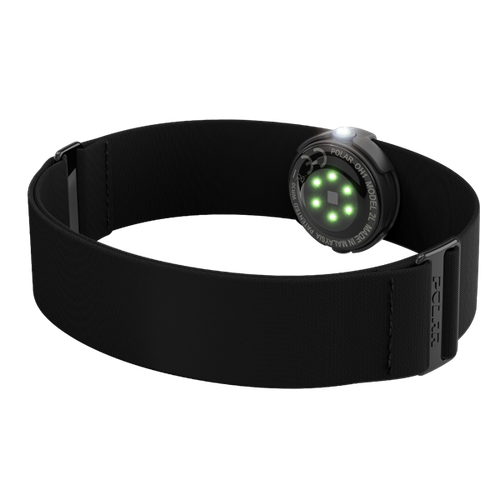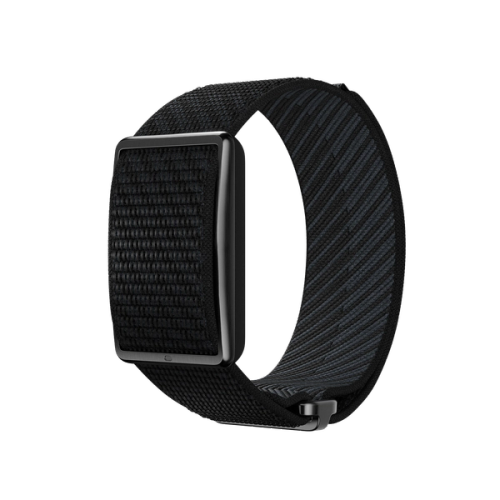Week after week, you've been pounding the pavement, building up your endurance and stamina. You've even started to enjoy the rhythm of your running. But lately, something's changed. The progress you once felt so quickly has slowed down. You've hit a plateau.
Don't worry, it's a common experience. Your body is a remarkable machine, but it's also intelligent. When you repeatedly do the same thing, it becomes increasingly efficient. It adapts to the stress you're putting on it so that once-challenging run becomes a comfortable routine.
But there's good news: you can break through this plateau. The secret? Including interval training with your running. Mixing up your routine with short bursts of high-intensity effort (followed by rest periods) will shock your system and force it to adapt again. It's like hitting the reset button on your fitness journey.
Whether you're a beginner planning to run your first 5k (psst. check out our 5k training plan) or a seasoned marathoner, interval training can help you reach your running goals. By incorporating these powerful workouts into your routine, you'll experience increased speed, endurance, and overall fitness. So, lace up your running shoes and prepare to take your training to the next level.
What is interval training?
Interval training involves alternating short bursts of high-intensity exercise with periods of rest or low-intensity activity. This type of training is highly effective for runners to improve both aerobic and anaerobic fitness and their performance.
For optimal performance, it’s important to train across a range of paces and intensities. For that, interval training offers endless variety for runners, with workouts tailored to different goals and fitness adaptations. These can range from short, fast intervals to longer intervals at a more moderate pace. The key is to use a mix of paces to stimulate specific physiological improvements.
Short, high-intensity intervals focus on speed development, improving your ability to sustain efforts near or above your anaerobic threshold. On the other hand, longer intervals are designed to build endurance and enhance your capacity to maintain a steady pace over extended periods.
For example, marathon runners can benefit from long intervals at marathon pace, simulating race conditions and training the body to efficiently utilize energy over time. By incorporating various types of interval training into your routine, you can target both speed and endurance, becoming a well-rounded and more efficient runner.
How Interval Training Works
A typical interval training run alternates between periods of high-intensity effort, where your body approaches or exceeds its aerobic threshold, and recovery intervals at a slower pace. As you push yourself harder, lactic acid builds up in your muscles, which leads to muscle fatigue and pain.
During the recovery periods, your body has a chance to recharge and clear lactic acid from your muscles, preparing you for the next high-intensity effort. This process helps to reduce muscle soreness and improve your overall endurance.
What is interval training good for?
interval training isn’t just for advanced runners or those chasing ambitious goals. It’s a versatile and highly effective training method that benefits runners of all experience levels, from beginners to seasoned athletes.
Some of the key perks for runners include:
- Leave your comfort zone: Interval training pushes you to work harder than you normally would, helping you break out of your comfort zone and achieve new fitness goals.
- Breaking training monotony by adding variety to prevent plateaus and maintain motivation.
- Mental boost: Pushing yourself during high-intensity intervals can release endorphins, leaving you feeling energized and uplifted.
Good vibes aside, let's dive deeper into the specific benefits and how they can revolutionize your running routine.
Interval training benefits
- Boost speed and endurance: As mentioned above, interval training adheres to the principle of adaptation, causing physiological changes that improve your running performance. These changes include increased cardiovascular efficiency, which allows your body to deliver oxygen more effectively to your working muscles. Additionally, interval training increases your tolerance to lactic acid buildup, enabling you to maintain higher-intensity workouts and runs for more extended periods. That translates into improved speed and endurance.
- Be a stronger runner: Interval training can increase the risk of injury due to its high-intensity nature. However, unlike steady-state running, it builds strength and resilience through these intense workouts, so you can ultimately reduce your risk of injuries. This is especially beneficial for endurance athletes who may be prone to repetitive stress injuries.
- Improve cardiorespiratory fitness:Studies have shown that high-intensity interval training can be more effective than moderate-intensity continuous exercise in improving cardiorespiratory fitness. That is especially beneficial for runners with conditions like COPD and metabolic syndrome.
- Increase calorie burn: High-intensity intervals can help you burn more calories in a shorter time than steady-state cardio, according to a 2018 study.
- Enhance anaerobic threshold: By pushing your limits during high-intensity intervals, you can increase your anaerobic threshold. That means you can work at a higher intensity for more extended periods before experiencing fatigue.
- Increasing speed gradually: interval training allows beginners to safely experience faster paces in controlled bursts rather than sustained efforts.
- Sharpening race-specific pace: Structured intervals help you internalize goal race speeds, making them feel more natural and sustainable on race day.

Interval running for beginners
When you start interval training, it's crucial to begin with a simple interval structure and gradually increase the intensity and duration of your workouts as your fitness improves. The good news is that interval training is very versatile. You can customize your sessions to fit your specific needs and goals.
Whether aiming to improve your 5K time or next marathon, interval training can help you achieve your desired results. Let's explore the basics of interval training and how to incorporate it into your running routine.
For beginners and less experienced runners, limiting interval training to one session per week is generally sufficient. When combined with a long run and a medium-length run, this creates a well-rounded weekly routine.
How many interval training workouts a week?
Interval running sessions are highly demanding and can place significant stress on your body, increasing the risk of injury or overtraining. To avoid these pitfalls, it’s essential to balance your workouts and prioritize adequate recovery after each session.
For beginners and less experienced runners, limiting interval training to one session per week is generally sufficient. When combined with a long run and a medium-length run, this creates a well-rounded weekly routine. To ensure proper recovery, avoid scheduling hard workouts on consecutive days, such as a long run followed by an interval session.
More experienced runners may incorporate two or even three interval sessions per week, depending on their goals. This approach allows for a variety of interval training types, such as hill repeats, goal pace intervals, or other specialized workouts.
Start with a run/walk approach
Even if you don’t realize it, the simplest workout for new runners is essentially an interval session. Run/walk intervals are a fantastic way for beginners to ease into interval training. By alternating between running and walking, you can gradually increase your running time and intensity without overwhelming your body. This approach minimizes the risk of injury and makes interval training more accessible and enjoyable.
All you have to do is plan the duration of each interval. For instance, you might run for five minutes, walk for one, and repeat three times, gradually increasing your running pace with each interval. Or you could run uphill and walk downhill. By making your first and last interval easy, you’ll incorporate a warmup and cool down too.
Interval training by heart rate
Heart rate-based interval training is a highly effective method for tailoring your workouts to your fitness level and goals. By monitoring your heart rate, you can ensure that you're pushing yourself to the right intensity during intervals and recovering fully during the rest periods to avoid overtraining.
For interval training, you'll focus on alternating between the higher-intensity zones (3, 4, or 5) and lower-intensity zones (1 or 2) by tracking your heart rate during workouts. These zones and durations will vary depending on your fitness level and goals.
Interval training by RPE
Rate of Perceived Exertion (RPE) is a subjective measure of how hard you feel you're working during exercise. The RPE scale typically ranges from 1 to 10, where 1 represents very light intensity, and 10 means maximum intensity.
For interval training, you can use the RPE scale to target specific intensity levels during your high-intensity and recovery periods. Focus on alternating between bursts of high-intensity effort (RPE 8-9) and recovery periods (RPE 2-3). As you get fitter, you can gradually increase the duration and intensity of your intervals.
undefined

Polar Vantage V3
Premium Multisport Watch
An ensemble of biosensing instruments, AMOLED display, dual-frequency GPS, maps, and the most comprehensive suite of training and recovery tools on the market. The stage is set, and the Polar Vantage V3 smart sports watch is ready to put in the performance of a lifetime.
Precautions and Safety Tips
Before you start any new workout routine, it's essential to prioritize your safety and well-being. Here are some precautions and tips to keep in mind when incorporating interval training into your fitness regimen:
- Warm-up: Always start your workout with a 5–10-minute warm-up to prepare your body for more intense exercise. That can include light jogging, dynamic stretches, or bodyweight exercises.
- Start slowly: If you're new to interval training, start with shorter intervals and gradually increase the duration and intensity as your fitness improves. You should always aim at finishing your session with the feeling that you could do an extra rep – finish on a high note.
- Train on a smooth surface: Choose a smooth, flat surface to run on, such as a track or a paved road. That will help you maintain a consistent pace and avoid potential injuries. Whenever possible, avoid running in areas with heavy traffic or crowded spaces. A track provides an excellent alternative for interval workouts, offering a controlled, distraction-free environment.
- Proper recovery: Allow adequate recovery time between interval sessions, taking at least 24 hours to rest (sometimes longer). That will help your body repair and rebuild, reducing the risk of overtraining and injury.
Interval training workouts are generally structured around three key components: the distance (or duration) of the high-intensity interval, the duration of the rest period, and the intensity (or pace) of each interval.
Interval training routines
Interval training workouts are generally structured around three key components: the distance (or duration) of the high-intensity interval, the duration of the rest period, and the intensity (or pace) of each interval. By adjusting these variables, you can significantly alter the focus and goals of the session. Let’s elaborate:
- Distance or duration of the high-intensity interval: The length of the effort period determines the intensity and type of adaptation targeted. Shorter intervals often focus on building speed, while longer intervals typically improve endurance and aerobic capacity. For instance, sprints of 20-30 seconds primarily enhance anaerobic power, while 3-5 minute intervals work to improve your aerobic endurance. You can structure these high-intensity periods based on time (e.g., a fartlek session) or distance, with the latter being especially useful on the track.
- Duration of the rest period: The length of the recovery phase directly impacts the energy systems utilized during the high-intensity intervals. Shorter rest periods (e.g., 30 seconds) increase the overall intensity of the session, demanding more from the anaerobic system. Longer rest periods (e.g., 1-2 minutes) provide more complete recovery, allowing for higher-quality efforts and focusing more on aerobic endurance or sustaining a specific pace.
- Intensity or pace of each interval: The effort level of each interval determines the focus of the workout. High-intensity intervals close to maximum effort (e.g., 90-100% of maximum speed) target anaerobic capacity, improving the ability to sprint or exert maximal effort. Moderate-intensity intervals, at a pace that’s challenging but sustainable, enhance stamina and help build race-specific endurance.
By manipulating these three components, you can customize your interval sessions to target specific goals. For example, using short work periods with short rest periods will primarily engage the anaerobic system, boosting your ability to run fast for short bursts, improve speed, and recover quickly between efforts. On the other hand, longer work intervals with longer rest periods might emphasize building endurance and improving your ability to sustain a specific pace over time.
Next, let’s look at some typical approaches to interval training to get you inspired.
Sprint interval training
Sprint interval training (SIT) is a high-intensity workout that involves short bursts of all-out effort followed by brief recovery periods. Here's a simple approach to try on your first session:
- Warm-up: walk, then jog gently for 5 minutes
- Sprint interval: do a 30-second sprint (RPE 8-9 or HR zone 4-5)
- Rest interval: take 30 seconds to a minute to rest by walking or jogging (RPE 3-4 or HR zone 1)
- Repeat: do these sprint/rest intervals 8-12 times
- Cool down: jog gently, then walk for 5 minutes
As you gradually improve, you can increase the time on these sprint/rest intervals from 30 seconds to 2 minutes.
Pyramid interval training
Pyramid sessions offer a structured and progressive approach to interval training. This type of workout involves gradually increasing the duration of your high-intensity intervals, reaching a peak, and then gradually decreasing them.
A typical pyramid session might look like this:
- Warm-up: Begin with a 5–10-minute easy jog to prepare your body for the workout.
- Pyramid Intervals: Remember to recover for 1-2 minutes with a gentle jog or brisk walk between these intervals.
- Interval 1: 1 minute at a high intensity (RPE 8-9 or HR zone 4-5)
- Interval 2: 2 minutes at a moderate-high intensity (RPE 7-8 or HR zone 3-4)
- Interval 3: 3 minutes at a moderate-high intensity (RPE 7-8 or HR zone 3-4)
- Interval 4: 4 minutes at a moderate intensity (RPE 6-7 or HR zone 2-3)
- Interval 3: 3 minutes at a moderate-high intensity (RPE 7-8 or HR zone 3-4)
- Interval 2: 2 minutes at a moderate-high intensity (RPE 7-8 or HR zone 3-4)
- Interval 1: 1 minute at a high intensity (RPE 8-9 or HR zone 4-5)
- Cool-down: Finish with a 5-minute easy jog to help your body recover.
Remember to adjust the intensity and duration of the intervals to suit your fitness level and goals. The key to a successful pyramid session is to push yourself during the high-intensity intervals and recover fully during the rest periods.

Fartlek interval training
Fartlek, a Swedish term meaning "speed play," offers a less structured and more spontaneous approach to interval training. Unlike the above examples of interval sessions, which use precise timings, fartlek training allows you to vary your pace and intensity at will.
To perform fartlek training, choose a route with varying terrain, such as a park or trail. As you run, alternate between periods of high-intensity effort and low-intensity recovery. You can use natural landmarks, like trees or lampposts, to mark the start and end of each interval.
Here's a basic fartlek workout:
- Warm-up: Begin with a 5–10-minute easy jog to prepare your body.
- Fartlek Intervals: Run at a moderate pace for 5 minutes. Then, pick up the pace for 30 seconds to 1 minute, followed by a 2-minute recovery jog. Repeat this cycle 5-10 times.
- Cool-down: Finish with a 5-minute easy jog to help your body recover.
Enjoying this article? Subscribe to Polar Journal and get notified when a new Polar Journal issue is out.
Subscribe
Enjoy the Process
Interval training is a fantastic way to boost your running performance. Remember, the key is to have fun with it! Experiment with different types of workouts, such as pyramid sessions, fartlek training, or classic interval training.
Don't forget the importance of recovery. Proper rest and nutrition are essential for optimal performance and injury prevention. Listen to your body and take rest days when needed.
By incorporating interval training into your routine and prioritizing recovery, you'll be well on your way to achieving your running goals. Happy running!
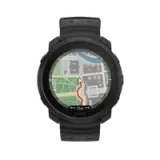 Polar Vantage M3
Polar Vantage M3
 Polar Grit X2 Pro Titan
Polar Grit X2 Pro Titan
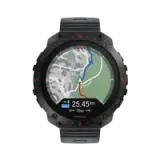 Polar Grit X2 Pro
Polar Grit X2 Pro
 Polar Grit X2
New
Polar Grit X2
New
 Polar Vantage V3
Polar Vantage V3
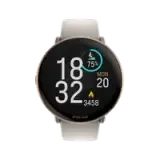 Polar Ignite 3
Polar Ignite 3
 Polar Ignite 3 Braided Yarn
Polar Ignite 3 Braided Yarn
 Polar Pacer Pro
Polar Pacer Pro
 Polar Pacer
Polar Pacer
 Polar Unite
Grit X Series
Vantage Series
Pacer Series
Ignite Series
Polar Unite
Grit X Series
Vantage Series
Pacer Series
Ignite Series
